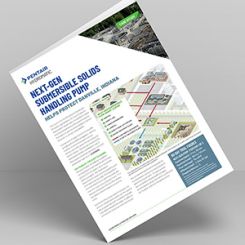After a period of falling prices, from more than $100 per barrel in late 2014 to $49 per barrel in January 2015, a subsequent rise in oil prices indicated that supply and demand for crude oil may be beginning to balance out. In the best case scenario, oil prices could rise until production grows and offset the decline in inventories from decreased drilling activities. In the worst case scenario, the price of oil is expected to fluctuate, which could lead to a structural change in the supply and demand of crude oil. Given the role metering pumps play in upstream crude oil production, these two scenarios could affect the demand for metering pumps. In the last decade, hydrocarbon investments in remote shale oil and gas areas and offshore activities have fueled the demand for metering pumps. As a result, a number of suppliers found a niche market in the individual shale plays. Similarly, the development of offshore drilling, which began near the coast and has now turned into a race to conquer the deep sea, created niche opportunities for metering pump players with specialization capabilities and more robust specifications that allow equipment to withstand high pressures and extreme temperatures. The connection between unconventional drilling activities and its metering pump suppliers entered its first rocky stage with the oil crash in 2008 to 2009 and again in 2014. The falling prices resulted in a decline in the number of new oil rigs, presenting a difficult landscape for suppliers.
 Figure 1. Total metering pump market in oil and gas industry—revenue forecast by region (Courtesy of Frost & Sullivan)
Figure 1. Total metering pump market in oil and gas industry—revenue forecast by region (Courtesy of Frost & Sullivan)
